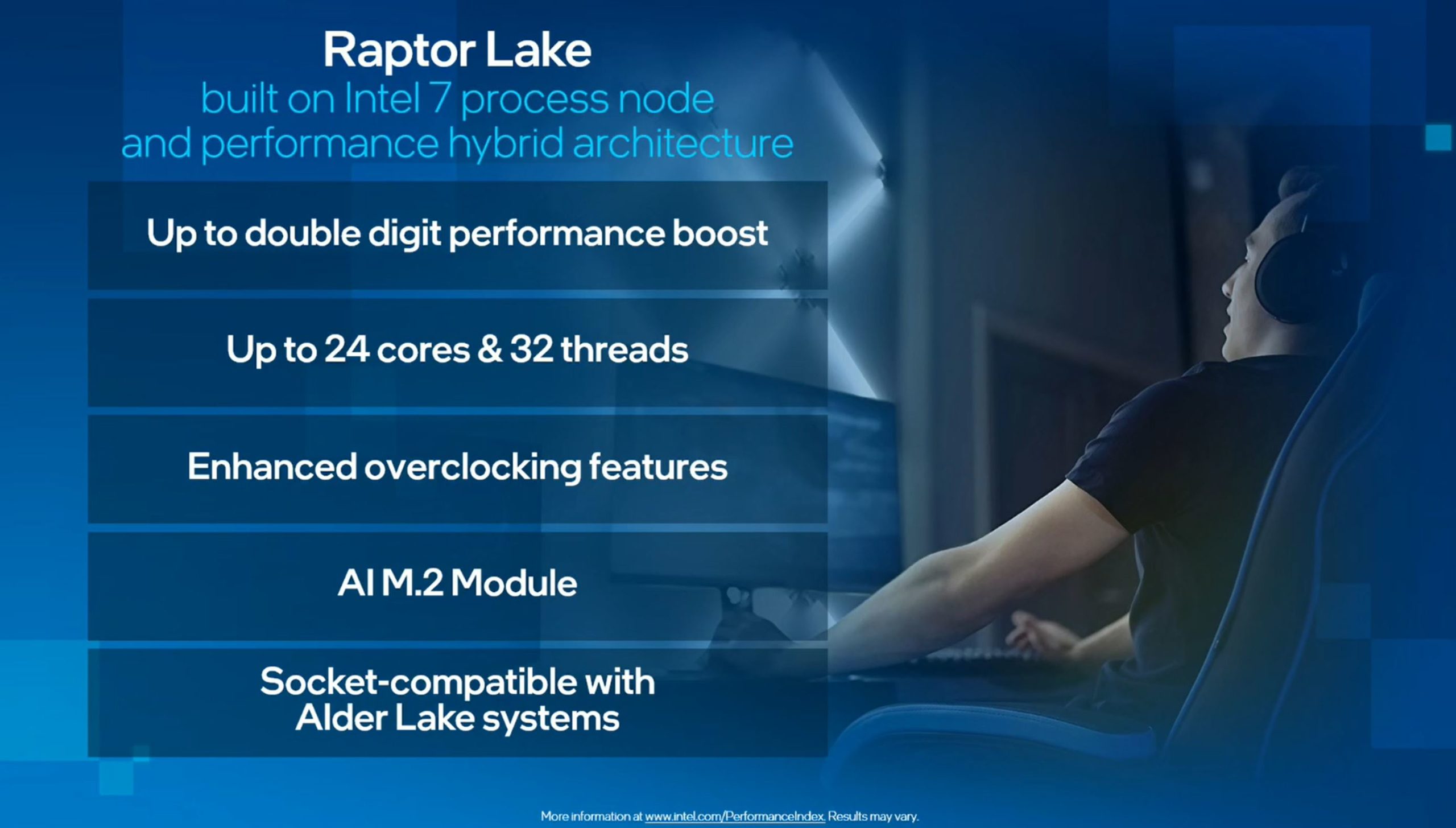
The chip giant has given official information about Intel Raptor Lake-S, its next generation of high-performance processors for the general consumer market, and the details it has specified are, without a doubt, very interesting. Intel Raptor Lake-S will be, as many of our readers know, the generation that will succeed the current Intel Alder Lake-S, and will maintain both the hybrid design of these, that is, the division into high-performance cores and high-efficiency cores, such as the LGA1700 socket, the Intel 7 node and memory support DDR5 and DDR4.
What does all this mean? Well, very simple, that Intel Raptor Lake-S will be an evolution that will focus on improving performance compared to Intel Raptor Lake-S, and will do so in both single-thread and multi-thread, thanks to the increase in IPC that will be introduced by the high performance Raptor Cove coresand the increase in high-efficiency cores, which will go from the current maximum of 8 to a total of 16. This means that Intel’s future top-of-the-range chip, the Core i9-13900K, will have 8 high-efficiency Raptor Cove cores. performance and 16 high-efficiency Gracemont cores, for a total of 24 cores and 32 threads, thanks to HyperThreading.
As we have said, the Santa Clara giant will maintain the Intel 7 node (Enhanced 10nm SuperFin) so we can expect similar or slightly higher power consumption and temperatures compared to current Alder Lake-S based chips. We still don’t have details on cache configurations or working frequencies, but I don’t expect any changes at the cache level, and I don’t think working speeds are going to be much faster than current chips. The performance improvements will come more from the IPC side and from the increase in efficient cores.
Intel Raptor Lake-S: Why is Intel betting on efficient cores?
There are several reasons that we must take into account. The first is that a high-performance core occupies, at the silicon level, almost the same as four high-efficiency cores. As our more advanced readers will know, silicon-level space is a valuable and limited resourceand at Intel they have come to the conclusion that the best way to take advantage of it is to keep that division of 8 high-performance cores and 16 high-efficiency cores.
That said, one wonders if Intel has been right, or if on the contrary it is a wrong approach. In my review of the Intel Core i9-12900K I was able to confirm that the efficient cores offer fantastic value in terms of performance-to-power consumption. They really make a substantial difference in multithreaded applications, and not only do they occupy a much smaller amount of space at the silicon level, but they also consume much less, and therefore generate less heat.
On the other hand, keep in mind that efficient cores allow for designs that are easier, and more cost-effective, to transfer to wafer. It is a topic that we have already discussed on other occasions. Those 16 high-efficiency cores should occupy, at the silicon level, about the same as four high-performance cores. Interesting, right? Now think about the complexity of each type of core and the wafer-level failure rate that a chip with 16 high-performance cores might have. You got it, right?
We have left another important aspect for last, and that is that the vast majority of users who fit into the general consumer market they do not need processors with more than 8 cores and 16 threads. Only those who use professional applications, or run demanding tools in the background, really require a higher number of cores. For these cases, high-efficiency cores have proven to be a fantastic solution to cover these needs optimally, keeping costs under control, and without consumption and working temperatures reaching unacceptable levels.
If all goes according to plan, the launch of the new Intel Raptor Lake-S processors will take place later this year, probably early november. If we have an LGA1700 motherboard we can use them without any problem, as we have already mentioned at the beginning of the article.




